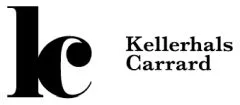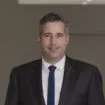The Federal Council adopted the amended Collective Investment Schemes Ordinance (CISO) on 31 January 2024. Not only does the revised CISO introduce the legal basis for the Limited Qualified Investor Fund (L-QIF)", but it also made selective adjustments to other areas. The new regulations encompass provisions applicable to Exchange Traded Funds (ETFs). The new rules have entered into force on 1 March 2024.
1. Introduction
On 31 January 2024, the Federal Council published the amendments to the CISO for the introduction of the L-QIF. It also included the new art. 106 and 127b in the CISO. These provisions are important for ETFs, as they primarily enable listed and unlisted classes to be issued in the same collective investment scheme.
An associated amendment to the Collective Investment Schemes Act (CISA) and the Collective Investment Schemes Ordinance-FINMA (CISO-FINMA) is not necessary, as they do not contain any rules specifically for ETFs.
2. The amended provisions of the ordinance
The Federal Council has implemented three amendments:
- The Federal Council has removed art. 40 para. 5 CISO, which was the only existing provision in the collective investment scheme law for ETFs that was in effect until now.
- The Federal Council has introduced the new art. 106 CISO. The previous art. 106 CISO has already been repealed on 1 January 2020, meaning that this provision had been blank" until now.
- Finally, with article 127b CISO, the Federal Council has introduced a provision for foreign ETFs only.
An English office translation of art. 106 and art. 127b CISO can be found at the end of this publication.
3. Principle: ETF definition at class level
ETFs are now defined as follows in art. 106 para. 1 CISO: ETFs are units of an open-ended collective investment scheme that are permanently listed on a Swiss stock exchange and for which a market maker has been appointed (art. 106 para. 1 CISO).
What is new about this definition is that it applies at class level – provided that the collective investment scheme is divided into classes. Previously, however, the definition was connected to the entire collective investment scheme, meaning that the entire collective investment scheme was considered an ETF or not.
4. ETF-classes and non-ETF-classes
For Swiss collective investment schemes, this definition means the following:
If listed and unlisted classes are possible, one and the same collective investment scheme can have both classes that are listed on a stock exchange (so-called ETF-classes) and classes that are not listed on a stock exchange (so-called non-ETF-classes).
If a collective investment scheme is subdivided into both ETF-classes and non-ETF-classes, the subsequent naming rules (hereinafter section 5) and the transparency rules (hereinafter section 6) need to be respected.
5. New naming rules for ETFs
In order to prevent investors from being misled about the stock exchange listing of share class of a collective investment scheme, art. 106 para. 2 and 6 CISO provide special naming rules for ETFs:
- If a collective investment scheme bears the term Exchange Traded Fund" or ETF" in its name, all launched classes must be listed on a Swiss stock exchange.
- If not all classes of a collective investment scheme are listed on a Swiss stock exchange, the collective investment scheme may not bear the term Exchange Traded Fund" or ETF" in its name.
- Conversely, in the case of collective investment schemes, not all classes of which are listed on a Swiss stock exchange, the listed classes must bear either Exchange Traded Fund" or ETF" in their name. The other classes that are not listed on a Swiss stock exchange may not have these two terms in their names.
This serves the purpose to prevent that an investor intends to subscribe to an ETF but subscribes to a share class that is not listed on a Swiss stock exchange.
6. Disclosure obligations
Art. 106 CISO also contains various disclosure obligations:
- The prospectus of each ETF must contain various ETF-specific information: (i) information on the listing, the indicative net asset value and the market maker, (ii) information on where and how often the composition of the ETF's portfolio or its basket of securities is disclosed, (iii) information on trading in the ETF on the primary and secondary markets and the associated risks and (iv) information on the right of secondary market participants to redeem units directly and the associated conditions and costs (para. 3). These obligations correspond to FINMA's previous practice. It remains questionable as to the purpose of stating the indicative net asset value, given that it changes on a daily basis.
- If the ETF tracks an index and is therefore not actively managed, the index, the replication method and the tracking error must be disclosed (para. 4).
- If the ETF is actively managed and therefore does not track an index, this must be disclosed in the prospectus, the key information document, the advertising and the fund contract/investment regulations (para. 5).
- If a collective investment scheme is divided into ETF-classes and non-ETF-classes, this distinction must be disclosed in the description of the structure of the unit classes (para. 6; see section 4 above).
7. Special rules for foreign ETFs
Except for the definition in art. 106 para. 1 CISO, the above rules only apply to Swiss collective investment schemes. For foreign collective investment schemes, the Federal Council has introduced art. 127b CISO. It replaces the previous art. 40 para. 5 sentence 2 CISO.
Similarly to art. 106 CISO, this provision is based on the idea that the definition of an ETF is linked to the unit class (see section 3 above). This means that foreign collective investment schemes can also have ETF-classes and non-ETF-classes.
If the ETF-classes are to be offered to non-qualified investors, these ETF-classes must be listed on a Swiss stock exchange.
Non-ETF-classes of the same foreign collective investment scheme, on the other hand, do not have to or may not be listed on a Swiss stock exchange.
If classes structured as ETFs are not listed on a Swiss stock exchange, these classes may only be offered to qualified investors in Switzerland. This must be disclosed in the prospectus.
8. Conclusion
These modifications are to be welcomed. After all, they incorporate into Swiss law what is already applicable in EU countries as a result of MiFID II and the ESMA guidelines and is also proposed by IOSCO (see IOSCO Principles for the Regulation of Exchange Traded Funds of June 2013).
Art. 106 Exchange Traded Funds (ETF) (Office Translation)
Footnotes
1 Exchange traded funds (ETFs) are units or unit classes of an open-ended collective investment scheme that are permanently listed on a Swiss stock exchange and for which at least one market maker in accordance with art. 41 c) FinIA ensures that the value of the traded units or unit classes does not deviate significantly from the indicative net asset value.
2 A collective investment scheme may only be referred to as an exchange traded fund" or ETF" if all units or unit classes are structured as ETFs.
3 In particular, the prospectus must contain the following information on ETFs:
- Information on the listing and the indicative net asset value of the ETF and the market maker;
- Information on where and how often the composition of the ETF's portfolio or its basket of securities is disclosed;
- Description of the ETF's trading on the primary and secondary markets and the associated risks;
- Reference to the right of secondary market investors to redeem directly with the fund management company or the SICAV, stating the associated conditions and costs.
4 For ETFs that replicate an index, the prospectus must also contain information on: a. the index provider and the index being replicated; b. the replication method and the associated risks; c. the projected replication error under normal market conditions.
5 If the ETF is actively managed, this must be stated in the fund contract or in the investment regulations, in the prospectus, in the key information document and in the advertising. The details of the implementation of the investment policy must also be included in the prospectus.
6 If a collective investment scheme contains both ETF and non-ETF unit classes:
- the suffix ETF" must be used in the designation of unit classes structured as ETFs;
- the details of the structure of unit classes as ETFs must be disclosed in the prospectus, in particular with regard to the mode of operation, trading and other differences from the other unit classes, as well as the associated effects and risks for investors;
- it must be stated on the first page of the fund contract or investment regulations, the prospectus and the key information document as well as in the advertising that the collective investment scheme contains both ETF and non-ETF unit classes.
Article 127b Foreign ETFs (Office Translation)
Units or unit classes of a foreign open-ended collective investment scheme that are structured as ETFs under foreign law and are offered to non-qualified investors in Switzerland must be permanently listed on a Swiss stock exchange.
The content of this article is intended to provide a general guide to the subject matter. Specialist advice should be sought about your specific circumstances.






